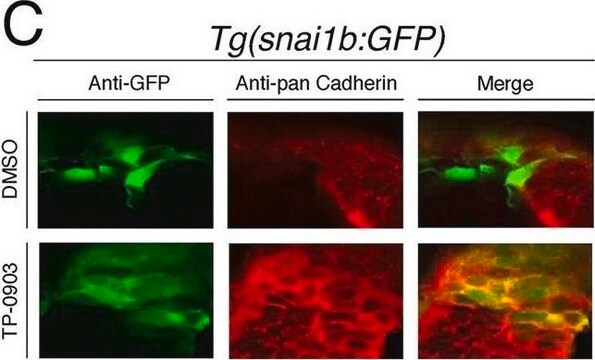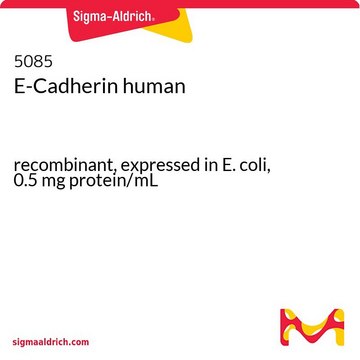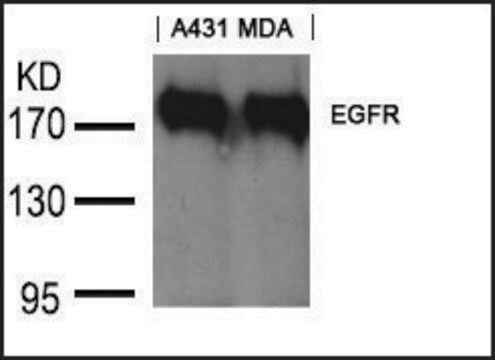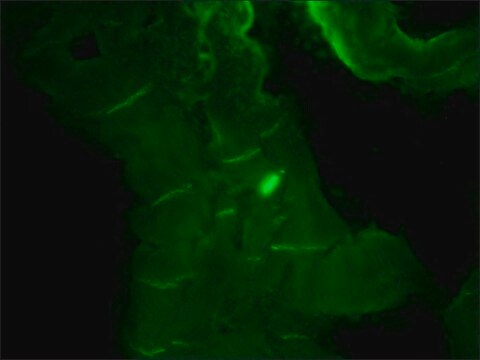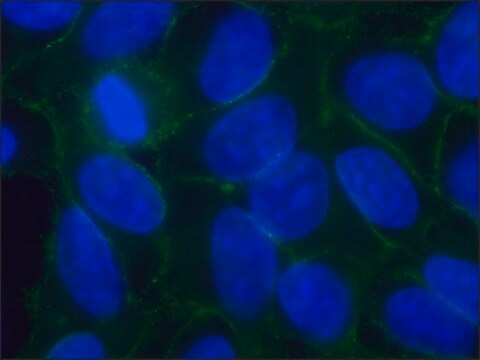E2153
E-Cadherin/Fc Chimera from mouse
>90% (SDS-PAGE), recombinant, expressed in NSO cells, lyophilized powder
Synonym(s):
L-CAM, Arc-1, Cell-CAM120/80, Epithelial cadherin, Uvomorulin
Sign Into View Organizational & Contract Pricing
All Photos(1)
About This Item
Recommended Products
biological source
mouse
Quality Level
recombinant
expressed in NSO cells
sterility
sterile; sterile-filtered
Assay
>90% (SDS-PAGE)
form
lyophilized powder
mol wt
monomer calculated mol wt 88.2 kDa
~120 kDa by SDS-PAGE (reducing)
calculated mol wt 88.2 kDa
packaging
pkg of 50 μg
technique(s)
cell culture | mammalian: suitable
impurities
endotoxin, tested
UniProt accession no.
shipped in
ambient
storage temp.
−20°C
Gene Information
mouse ... Cdh1(12550)
General description
E (epithelial)-cadherin is a type I classical cadherin, which exists as a dimer. It has an ectodomain made of five extracellular cadherin-like (EC) domains, connected by conserved linker regions, which are calcium-binding in nature. It spans the membrane once, and contains a cytoplasmic region. It is a glycoprotein, and in humans has a molecular weight of 120kDa. It binds to catenin and cytoskeletal protein with its C-terminal domain.
Extracellular domain of mouse E-Cadherin (amino acids 1-709) fused to the carboxy-terminal 6X histidine tagged Fc region of human IgG1.
Application
E-Cadherin/Fc Chimera from mouse has been used in adhesion assays.
Biochem/physiol Actions
E (epithelial)-cadherin is involved in hemophilic cell-cell adhesion in a calcium-dependent manner. It forms adheren junctions through its ectodomains, to maintain physical contacts between adjacent cells. It plays essential roles in developmental processes, tissue homeostasis and multiple diseases. In humans, this protein might be involved in the pathophysiology of ulcerative colitis. In Crohn′s diseased patients, mutations in this gene lead to a truncated or mislocalized protein product. Epithelial-mesenchymal transition (EMT) and mesenchymal-epithelial transition (MET) are the underlying processes of tumorigenesis and embryogenesis, and these involve the control of E-cadherin expression.
Physical form
Lyophilized from 0.2 μm filtered solution in 20mM MES, 300mM NaCl, 1mM CaCl2.
Storage Class Code
13 - Non Combustible Solids
WGK
WGK 3
Flash Point(F)
Not applicable
Flash Point(C)
Not applicable
Personal Protective Equipment
dust mask type N95 (US), Eyeshields, Gloves
Choose from one of the most recent versions:
Already Own This Product?
Find documentation for the products that you have recently purchased in the Document Library.
Xenopus δ-catenin is essential in early embryogenesis and is functionally linked to cadherins and small GTPases.
Gu D, et al.
Journal of Cell Science, 122(22), 4049-4061 (2009)
Ying Li et al.
Proceedings of the National Academy of Sciences of the United States of America, 110(41), 16462-16467 (2013-09-27)
Epithelial cadherin (E-cadherin), a member of the classical cadherin family, mediates calcium-dependent homophilic cell-cell adhesion. Crystal structures of classical cadherins reveal an adhesive dimer interface featuring reciprocal exchange of N-terminal β-strands between two protomers. Previous work has identified a putative
Dongmin Gu et al.
Journal of cell science, 122(Pt 22), 4049-4061 (2009-10-22)
Catenins of the p120 subclass display an array of intracellular localizations and functions. Although the genetic knockout of mouse delta-catenin results in mild cognitive dysfunction, we found severe effects of its depletion in Xenopus. delta-catenin in Xenopus is transcribed as
Hani Alotaibi et al.
Biochimica et biophysica acta, 1849(6), 731-742 (2015-02-06)
Epithelial-mesenchymal transition (EMT) and mesenchymal-epithelial transition (MET) highlight crucial steps during embryogenesis and tumorigenesis. Induction of dramatic changes in gene expression and cell features is reflected by modulation of Cdh1 (E-cadherin) expression. We show that Cdh1 activity during MET is
Jirapat Chunthapong et al.
Journal of cellular biochemistry, 91(4), 649-661 (2004-03-03)
The role(s) of E-cadherin in tumor progression, invasion, and metastasis remains somewhat enigmatic. In order to investigate various aspects of E-cadherin biological activity, particularly in prostate cancer progression, our laboratory cloned unique subpopulations of the heterogeneous DU145 human prostatic carcinoma
Our team of scientists has experience in all areas of research including Life Science, Material Science, Chemical Synthesis, Chromatography, Analytical and many others.
Contact Technical Service